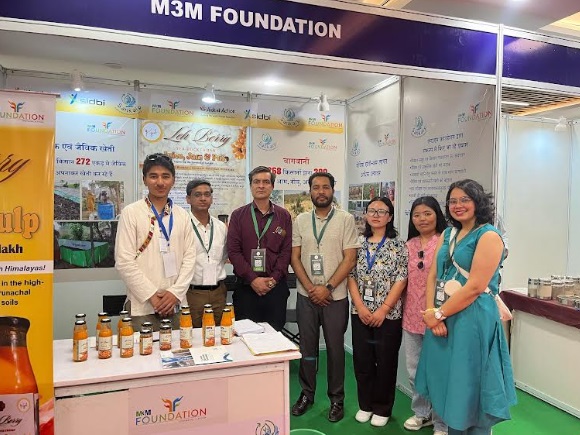The Indian contingent’s attire at the Olympics opening ceremony has provoked severe criticism. “Eyesore”, “uninspiring”, “work of absolute mediocrity” – the feedback was brutal and unsparing.
The sight of participants in uniforms that celebrate their heritage and flag is usually the most electrifying part of the opening ceremony.
But the costumes of the 300-member Indian squad and officials, created by top designer Tarun Tahiliani, left many disappointed. The ikat-inspired uniforms featured men in kurta-pyjamas and women in saris in the colours of the flag.
We missed the chance, said critics, to display the best of India on a global platform and showcasing authentic Indian craftsmanship. This also added to the wider debate on how India’s national uniform should reflect the country’s rich cultural heritage while safeguarding practicality and modernity.
Dull versus vibrant
Many believed Indian designs were wanting in vividness and creativity compared to athletes from other countries who wore vibrant uniforms. It was a treat to watch smaller nations like Mongolia, Sri Lanka and Haiti’s contingents sail down the River Seine in clothes reflecting their handcrafted traditions and culture.
Mongolia’s viral uniform blended tradition with trendy to produce an iconic ensemble using the nation’s blue, red and white colours. Sri Lanka’s white garments featured silk, handmade embroidery and beadwork in a nod to the royal courts of the 19th century. The Czech Republic team made an innovative and practical statement with stylish tie-dye coats as it rained during the procession.
Lowering morale
Tahiliani’s choice of cotton and viscose crepe instead of silk was questioned by many, including celebrities. Why he chose digital ikat prints over weaves and embroideries to highlight India’s rich handloom and handicraft traditions has also baffled critics.
On social media, users speculated that the ‘ugly’ outfits couldn’t be good for our athletes’ morale and confidence on the opening day of Olympics.
Jwala Gutta, ace shuttler, was one of the first to comment on X: “First not all girls know how to wear a sari…why didn’t the designer use this common sense and make a pre-draped sari (which is in current trend). After not much of thinking. The garments which was (were) made for the Indian contingent participating in Olympics this time has been a huge disappointment!! (Especially when the designer was announced I had huge expectations).”
After not much of thinking..
The garments which was made for the Indian contingent participating in Olympics this time has been a huge disappointment!! (Especially when the designer was announced I had huge expectations)
First not all girls know how to wear a saree…why didn’t… pic.twitter.com/b5UjzpvUJQ
— Gutta Jwala ? (@Guttajwala) July 28, 2024
A blogger wrote: “Hello Tarun Tahiliani! I have seen better saris sold in Mumbai streets for Rs.200 than these ceremonial uniforms you’ve ‘designed’.” The blogger called it a combination of digital prints, cheap polyester fabric and the tricolour thrown together without any imagination.
Tahiliani designed the look in association with ‘Tasva’, (a collaboration between Tahiliani and Aditya Birla Group). In a statement. Tasva described the Olympic attire as a fusion of tradition and modernity, inspired by the Indian tricolour.
Defending his decision to dress female athletes in saris, Tahiliani told NDTV that the Olympic committee’s feedback influenced the choice, as saris “can flatter any body type”. “This is what we Indians wear, and this is not meant to be a couture show,” he said.
Why the digital print? Tahiliani blamed it on tight deadlines. “We had only three weeks to complete the task, and weaving handlooms for 300 uniforms within that timeline was not feasible,” he said. He has also been accused of incorporating the ‘Tasva’ logo in the design.
Support from Fraternity
India’s fashion fraternity has come out in support of Tahiliani’s designs. Prasad Bidapa, fashion curator, says, “Indian audiences now expect Ambani-level pageantry and extravagant looks for the red carpet. They were not able to understand the Gandhian simplicity of a sari for women or kurta-pyjama for men.”
Bidapa adds, “Today, social media has made everyone a fashion expert. The more negative the comments the higher the engagement and number of likes. Many top designers and textile experts I spoke to also appreciated the designs.”
This was the first time that the Indian Olympic contingent wore the design of a well-known couturier, in the world’s fashion capital, and expectations soared.
In the past, the dress code for the event had been the regulation sari, salwar suits, suits, bandhgalas, turbans and blazers.
“I’m surprised that the fashion fraternity says it was not a fashion show. Do the members of the fashion fraternity roam around in pyjamas when they are not in a fashion show? Every sportsperson, who plays at the world level, is bigger than fashion models,” Jwala Gutta told NDTV.
“Why do sportspersons other than cricketers have to compromise on their looks and clothes to make them look like they are hard working? Only cricketers are supposed to look glamorous. What kind of theory is this?”
How could the uniform have been better? Bidapa says, “I would have suggested the use of brighter and bolder prints like Andhra Pradesh’s Kalamkari or Rajasthan’s block prints. Both these processes take time and would not have been possible in that short time given to Tarun (Tahiliani).”
Some have pointed out that Tarun Tahiliani has dressed many stars and celebrities – even Kim Kardashian – for a recent Indian wedding extravaganza. He put minimal effort into the costumes for the India contingent, they say uncharitably.
Two local designers from Mongolia, on the other hand, managed to charm a very tough crowd – the internet fashion police.
(Bharti Mishra Nath is Contributing Editor, NDTV)
Disclaimer: These are the personal opinions of the author














